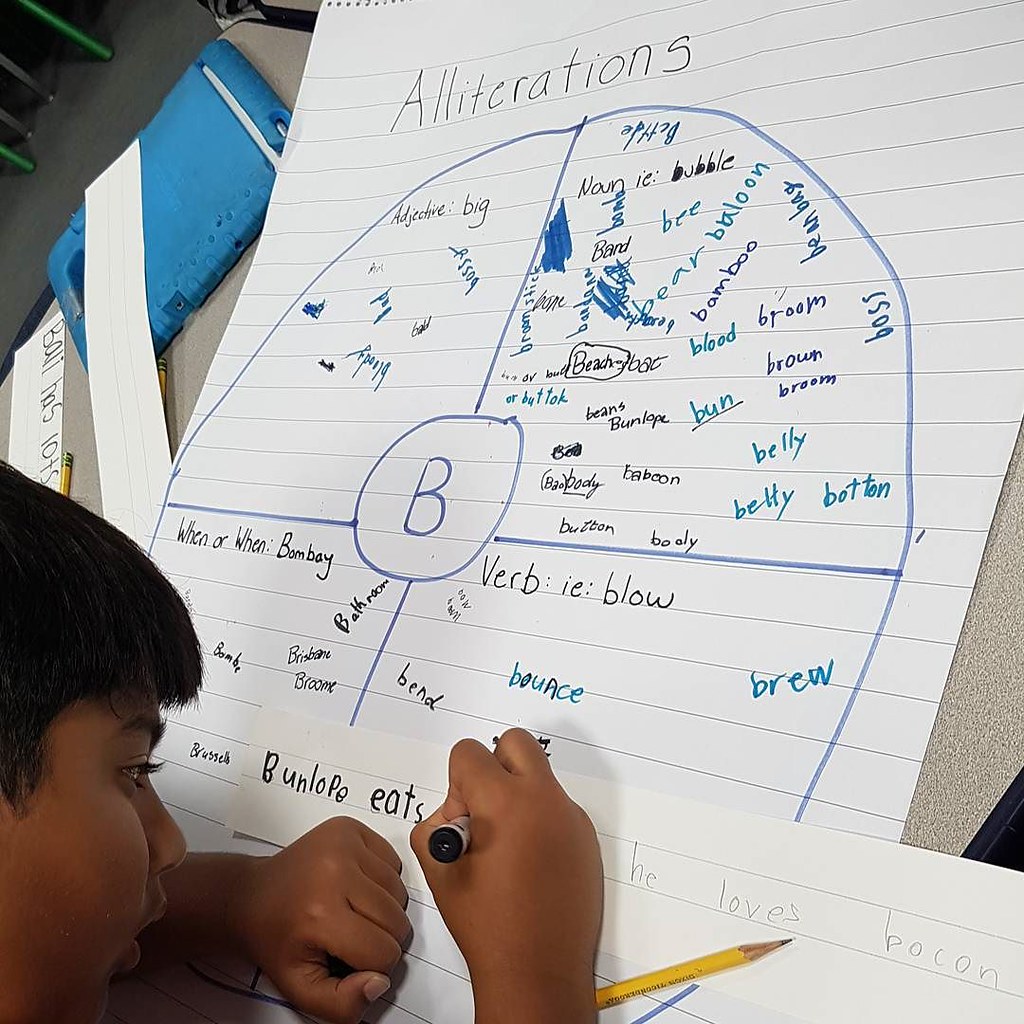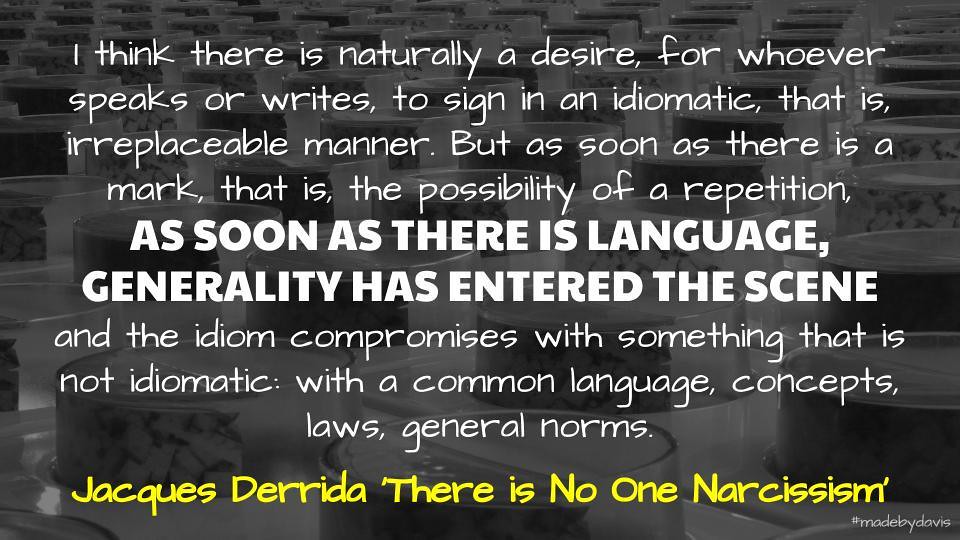Difference Between Alliteration and Repetition
Alliteration and repetition are found side by side in the literary world. Alliteration makes specific emphasis on sounds in words, while repetition engages in repeating the same words or sequences of words, to make a point in the written word. Alliteration, as a figure of speech, appears in poetry, prose and musical lyrics. Alliteration is used to give rhythm and help make the sentences more pleasing to the ear. Repetition has its place in poetry, prose and musical lyrics adding to chorus lines and helping to complete the rhythm of songs and poems. There may be a crossing over of the two styles, but basically alliteration will focus on the sound in words and letters while repetition is dependent on the repeated use of words or phrases.

What is Alliteration?
Alliteration in its most simple form is the use of the first consonant letter of consecutive words in the writing. The words succeed one another in a sentence. The use of sounds within words can be used for the purpose of alliteration. The letters do not have to be the same, but the sound does. Look at this sentence:
‘Crooks conspire with the kind king.’ The consonants c and k both make the same sound.
Words can be used between the alliterated words. The alliteration becomes apparent when the whole sentence is read. Vowels can be part of an alliteration, providing they have the same sound. Consonance is the use of consonant sounds over several words in a sentence while assonance refers to the use of vowels in a sentence as long as they sound alike.
Alliteration has found its way into the commercial world and has been successfully used in branding and advertising products with catchy names.
What role does alliteration play in literary circles?
- Alliteration is used to stress a point and to make the sentence more pleasing to the ear.
- It automatically gets the readers attention as the stress on sound becomes apparent.
- It brings resonance and mood into a piece of writing. For example, using the ‘s’ sound repeatedly when writing about a snake brings the sssss sound into the piece of writing and reminds the reader of a snake.
- Alliteration used in literature brings a harmony of sound to the literary works of Shakespeare and other classical authors. Consider these words from Romeo and Juliet:
‘From forth the fatal loins of these two foes,
A pair of star crossed lovers take their life.’
- Alliteration is used in marketing to help the consumer relate to a product.
‘Maybe she’s born with it, maybe it’s just Maybeline.’ a catchy phrase to draw attention to the name of the product – Maybeline.
- Branding products with names that use alliteration is part of marketing too. Products like Kitkat or Canon Camera are more readily remembered with a bit of alliteration. Our super heroes can be added to this section. Alliteration for the hero’s names like Clark Kent or Wonder Woman help brand the name and make it more memorable.
- Song lyrics and different composition styles make use of alliteration. The modern RAP song takes full advantage of alliteration combining sounds and words to make the lyrics memorable.

What is Repetition?
Repetition is simply repeating words or phases. The act of saying things over again is repetition, or what is known as re -petitioning. Repetition is a rhetorical device, a way of persuading or motivating a reader. The writer, motivates through stressing in a particular piece of writing, using repetative words or phrases. Repetition is a popular way of connecting with an audience and used in public speaking. Repetition allows the speaker to emphasis the words that are important and need to be imprinted on the listener’s mind. A storyteller uses repetition to help remember the details of a story through repeated lines. Storys for young readers have repetitive lines or verses to help the emergent reader connect with the story or a character in the story. The Gingerbread Man for example has a rhyme repeated through the story that engages the younger reader or listener.
‘Run, run, run as fast as you can. You can’t catch me I’m the Gingerbread Man’ is repeated each time the Gingerbread Man meets another character in the story.
Charles Dickens, in his classical story The Tale of Two Cities, used repetition to make his words more memorable and convincing. He uses a contrast of positives and negatives with the repetitive words of ‘It was the’ to place importance on the opening mood of the book. Two cities, in two different phases of their history, and the different responses to the characters in the story.
‘It was the best of times.
It was the worst of times.
It was the age of wisdom,
It was the age of foolishness.’
Popular in speeches, it was Martin Luther King Jr who used the phrase ‘I have a dream’ throughout his speech. In this way he was able to connect himself, and his audience, to these words.
What role does repetition play in literary circles?
- Repetition in writing adds the extra stress or importance to the message being given. There are different styles of repetition. There are a variety of repetitive formats used by writers and poets. The following are the most well known in literary circles.
- Conduplication – is the repetition of a word in various places within a piece of writing. It is used to explain concepts or stress the importance of an idea.
For example Robert F Kennedy said:
‘So I ask you tonight to return home, to say a prayer for the family of Martin Luther King, but more importantly, to say a prayer for our own country, which all of us love – a prayer for understanding and that compassion of which I spoke.
- Diacope – The repeated words are separated by the addition of new words placed between them. For example, Shakespeare wrote these words for Prince Hamlet’s well known soliloquay from the play Hamlet :
‘To be or not to be.’
- Epanilipsis – The repetition of a word at the beginning and the end of a sentence.
For example:
Hungry cats lash out not because they are mean, but because they are hungry.’
- Polyptoton – the repetition of the same root word. For example:
I’m the decider, and I decide what is best,
- Whimsical style – Dr Seuss is very well known for the style of his writing in children’s books. Using repetition and rhyming he creates a silly style of writing that appeals to young children.
‘One fish two fish,
Red fish, blue fish.
And…
From there to here, from here to there,
funny things are everywhere.
This style is very typical of this repetitive, but effective style of writing.
Alliteration Vs. Repetition

Summary of Alliteration Vs. Repetition:
- Alliteration and repetition are both used as a way of enhancing a piece of poetry or prose writing. They bring more resonance to the work.
- Alliteration uses sounds to stress the dialogue or rhymes while repetition uses words or phrases repeatedly to add value or emphasis to the writing.
- Repetition is used by speech makers to stress points in a speech or to connect their audience with themselves through the speech.
- Alliteration has been successfully used in branding and marketing of specific products.
- Repetition has several ways to use this technique and has been successfully used in classical literature by authors like Charles Dickens and William Shakespeare.
- Alliteration can appear to be immature and lose its impact if it is over done. It may appear more like a riddle or childish rhyme rather than a piece of memorable writing.
- Repetition helps young readers with their early reading skills. It engages the listener in the story with repeated rhymes or words a particular character may say.
- Repetition is very persuasive and puts the reader at ease as the same phrases are a reminder of something positive. Alliteration adds harmony and memorable lyrics to the words of a poem or drama to a piece of prose as the different sounds are used creatively.
- Difference Between Lagoon and Bay - October 20, 2021
- Difference Between Futurism and Preterism - August 12, 2021
- Difference Between Dichotomy and Paradox - August 7, 2021
Search DifferenceBetween.net :
Leave a Response
References :
[0]Author @ Think written. Alliteration examples. Www.thinkwritten.com. May 7th 2018. Published Mediavine.
[1]Author @ your dictionary. Repetition examples in writing/www.yourdictionary.com. Published Lovetoknow,corp
[2]Image credit: https://live.staticflickr.com/1612/26537885615_91a1daf819_b.jpg
[3]Image credit: https://live.staticflickr.com/8007/29418742965_d566a5e010_b.jpg
